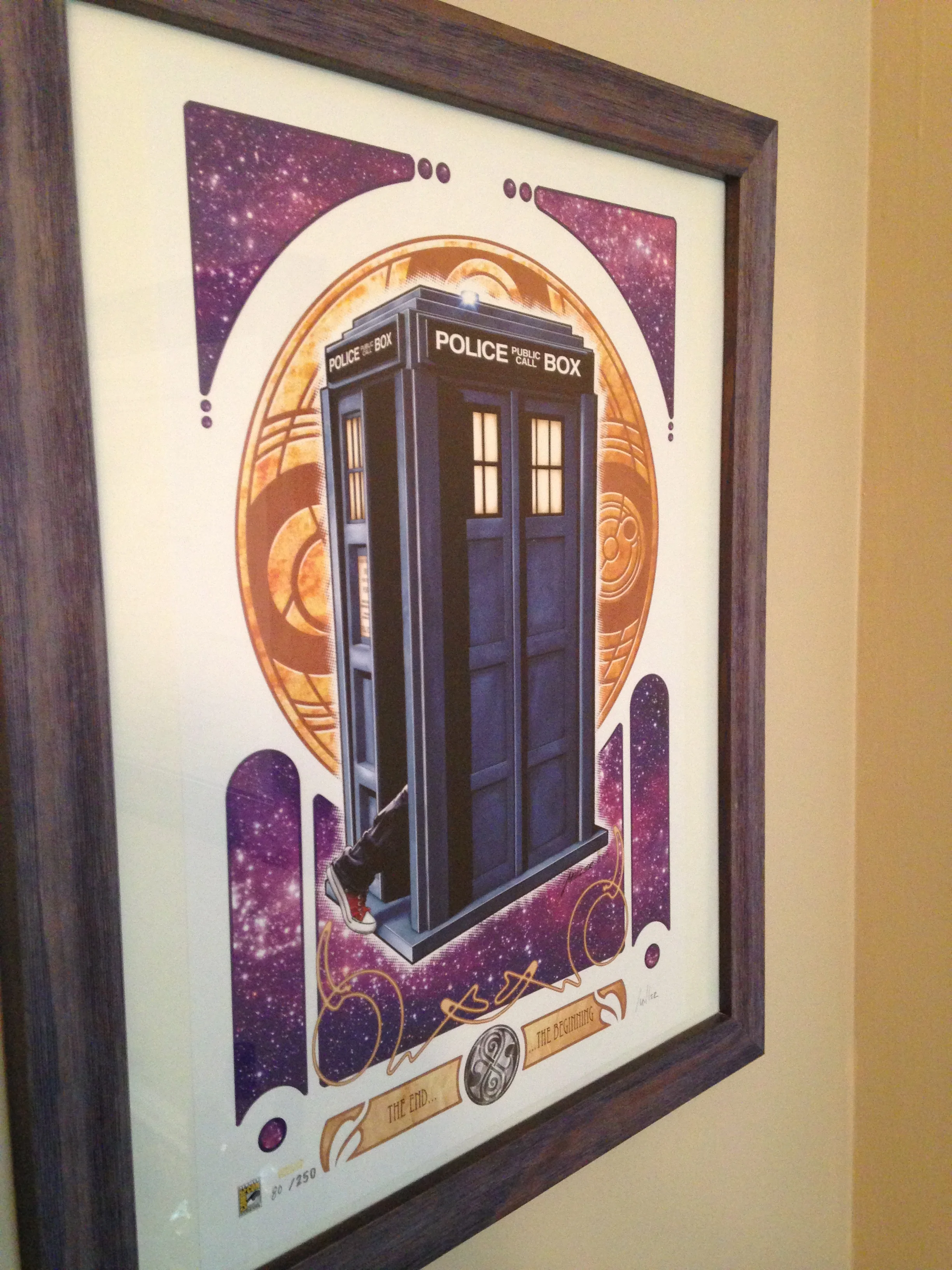Sticky Tech — How fictional stuff reaches pop-culture-icon status
There’s a lot of cool tech in science fiction, and some of it has reached “iconic” status. In my own fiction, I have some technology that I think will resonate with the reader — it’s become more or less “iconic” for me, at any rate. But as I think about it, I’m not sure there’s enough “personality” in things like the lightrail or even the Citadel tower to make them into cultural icons.
Maybe.
It really just depends on how well the stories do, I think.
In my new YA fantasy series, “Sawyer Jackson,” there isn’t really any tech at all, but there are some objects and items that I think may have that cool factor. Here’s hopin’.
All this has me thinking about the question: What makes a fictional object become a pop culture icon?
The Enterprise, in Star Trek, is one of the best-known fictional vessels of all time. I have a schematic of the Enterprise-D on the wall of my office (that's it above), and I haven’t once had anyone look at it and ask, “What the heck is that?” No matter how un-geeky they are, everyone knows that distinctive shape. Everyone gets it.
The TARDIS, in Doctor Who, has a lot of cool quirks that make it stand out from the rest of fiction’s mainstay icons. That blue police box, bigger on the inside and able to travel anywhere in time and space, somehow outclasses even the Enterprise for cool points.
Both of these icons have “personalities.” There were episodes of Star Trek: The Next Generation in which the ship’s computer could get a little sly and even sarcastic with the Enterprise crew. She had that sort of “generalized” personality that people ascribe to vessels — from POS first cars to state-of-the-art Navy battleships. But the personality of that ship goes deeper than anthropomorphism. The ship’s computer was an artificial intelligence of astounding complexity. Maybe not quite as sophisticated as Lieutenant Data, the show’s resident android Pinocchio. But there were times … she just came alive, without saying a word. Losing her in the first TNG film struck a blow for everyone, I think. I may be projecting.
But the TARDIS — she really is alive. We even get to see her personality shine in the now-famous Neil Gaiman-written episode “The Doctor’s Wife.” The interaction and play between the Doctor and the TARDIS is one of long-abiding love, trust, companionship, friendship — really, they’re family. And I’d argue that this life-force within the TARDIS is what makes it even more “sticky” as a cultural icon. The TARDIS isn’t just some machine, it’s the heart of the show. She’s the only character who has been on the show from day one — with the exception of some poor judgement that led to an ill-advised stretch of TARDIS-free living. Let us not speak of it.
In a sense, the quiet but living personality of the TARDIS is a lot like that of R2-D2 in Star Wars. C-3PO will prattle on about his complaints and woes, but R2-D2 quietly takes action and addresses problems, plays “confidant” to the “team,” and generally provides quiet strength. He’s sarcastic and sharp witted, and yet never says a word. How do you do that? I’m amazed.
Of course, this personality makes it even tougher to accept how callous everyone seems to be toward R2. He can be shot up pretty good, and the only one who seems to fret over him is C-3PO.
My view is that, in many ways, R2 may actually be wiser than Yoda. Yeah … that’s right … I had the midichlorians to say it.
Beyond the major franchises, there all kinds of scifi and fantasy icons that aren’t necessarily part of the main story or cast, but still seem to resonate with us. Serenity, from Firefly, is an awesome and oddly organic-shaped little ship that just fits the personality of the show. Proton Packs in Ghostubusters are the toys every kids wants for Christmas. DeLoreans have never been so cool as they were after Back to the Future.
Cool factor definitely plays a role in making this stuff iconic, but it’s not enough on its own. People dig the power ring in Green Lantern, but you don’t see much mention of it in casual nerd convo. The wands and broomsticks in Harry Potter have some limited appeal, they’re not a go-to or standby either.
In the end, I think the secret to fictional objects becoming sticky in pop culture is how much personality they have. No one thinks of their iPhone as being “alive,” and no one would mourn one for long if it was lost or damaged. They’d get upset, and then go buy another iPhone. But blow up the TARDIS or dismantle R2-D2, and people get serious. Tears can flow.
Or, beyond that, the tech has to have some major cool to it. It has to fulfill a dream, of sorts. A Proton Pack, firing controlled streams of energy, is way cool. Lightsabers may be the most impractical weapon of all in a universe filled with blasters and world-destroying super weapons, but they fill a void in our souls — the yearning to hold something in our hand that literally hums with power. These things max out our cool meter — we want them to exist so bad. They become sticky because we want them so much.
This stickiness is what I’m looking for in my own work. I think I’m getting closer. Maybe I haven’t gotten the formula right just yet, but I’m getting closer. When I am daydreaming about what I’d do “if only I had that thing,” then I think I’m close to the tipping point. Culture icon status, here I come.


